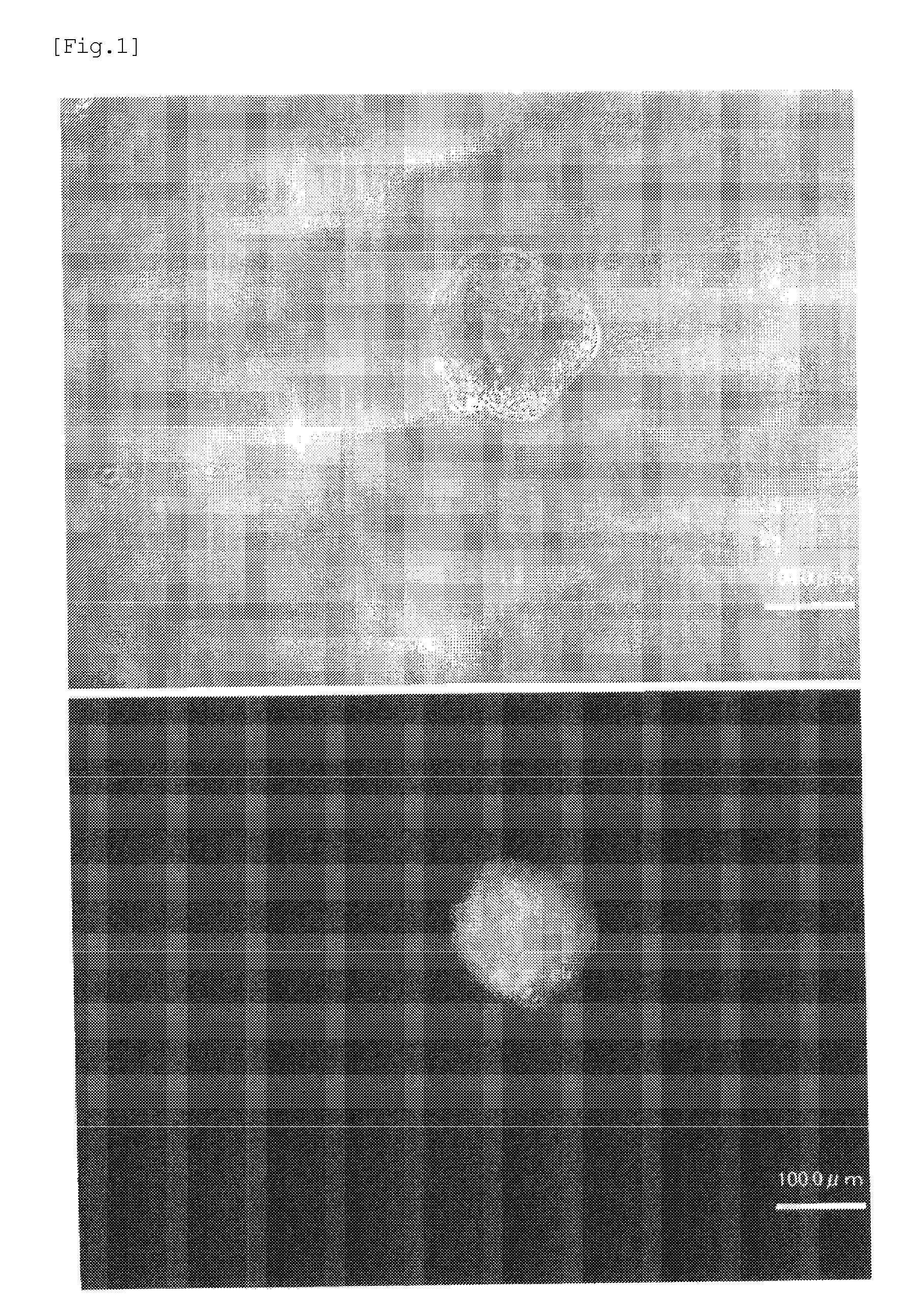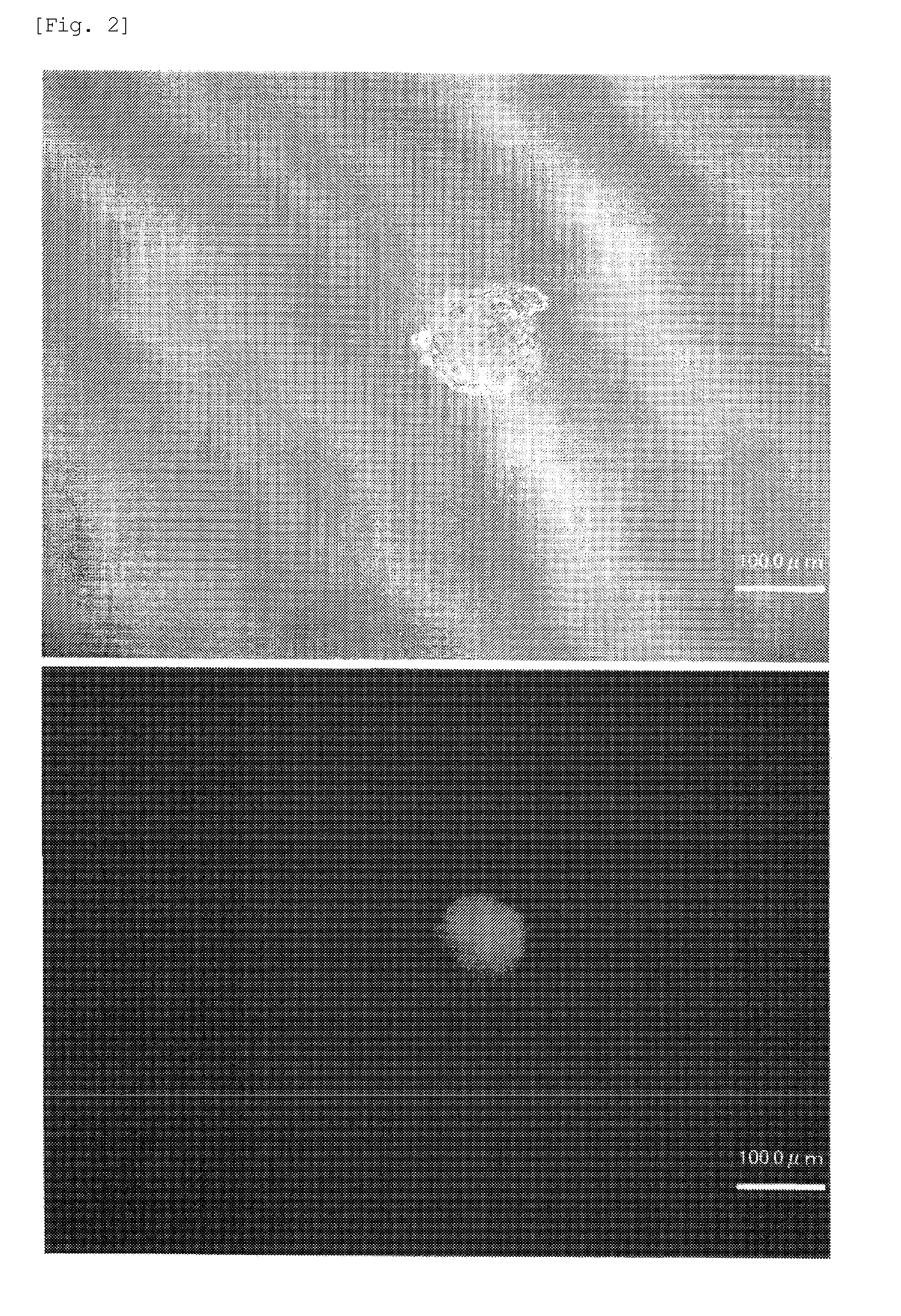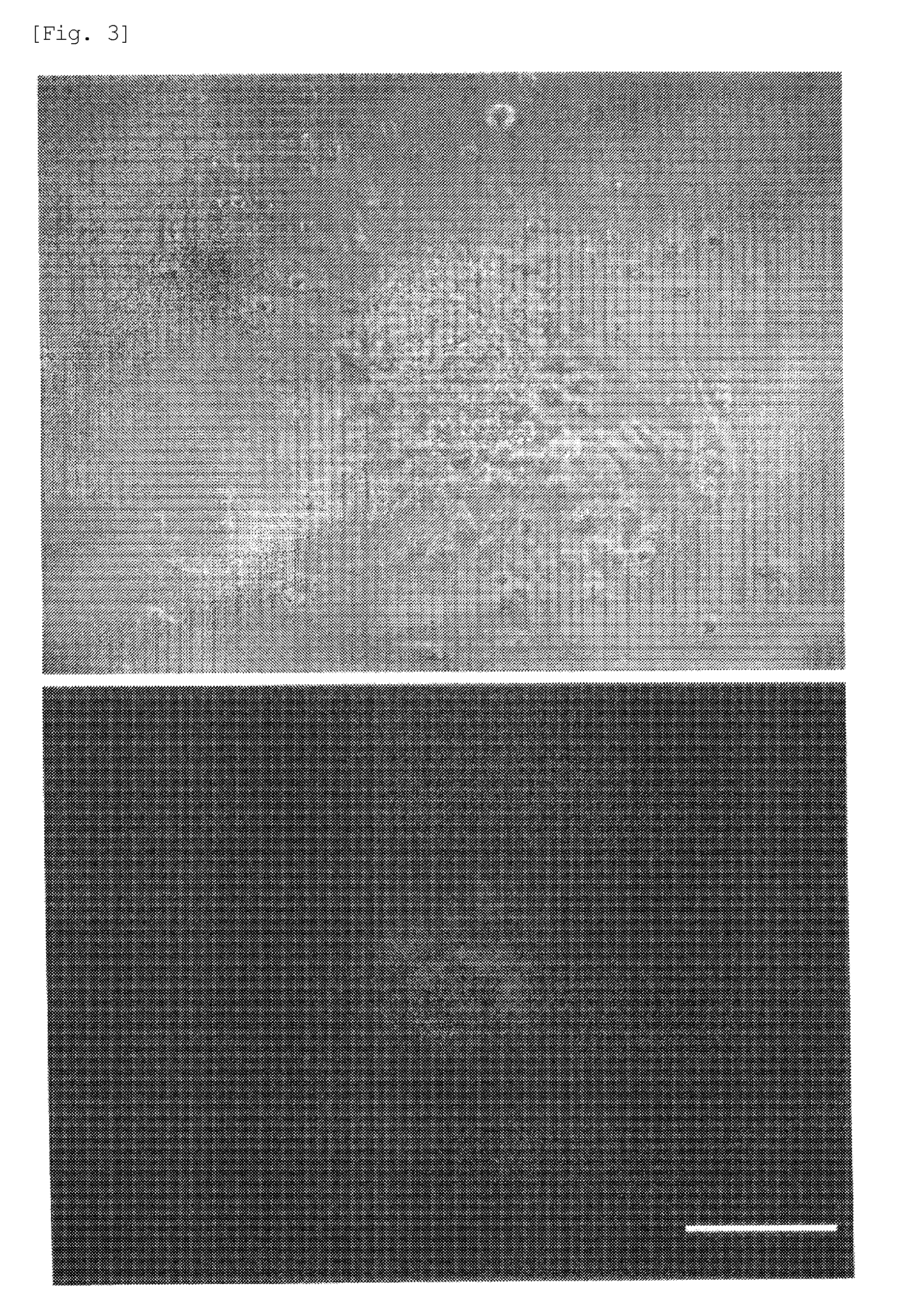Method for producing induced pluripotent stem cells
a technology of stem cells and stem cells, applied in the field of induced pluripotent stem cells, can solve the problems of human inability to have advanced regenerative medicine, and inability to produce pluripotent stem cells capable of pluripotent differentiation and self-replication, etc., to achieve high induction efficiency and facilitate expression
- Summary
- Abstract
- Description
- Claims
- Application Information
AI Technical Summary
Benefits of technology
Problems solved by technology
Method used
Image
Examples
examples
[0097]The present invention is more specifically explained below with reference to Examples, etc. The present invention is, however, not limited to these examples.
examples 1 to 3
[0098]An experiment was performed to produce induced pluripotent stem cells by reprogramming mouse adipose-derived stem cells (ABSC).
Experiment Procedure
[0099]Mouse adipose-derived stem cell (ABSC) strains were established from an NANOG-GFP mouse in accordance with the method disclosed in Non-Patent Literature 4, and cultured. Each group of the cultured ABSC strains was mixed with a solution obtained by diluting 5 μl / ml of Lipofectamine 2000 and chemically synthesized micro RNAs of one of the following combinations with a serum-free medium in an amount of 2×105 cells / ml, thereby transfecting microRNAs into cells.
example 1
7 (SEQ ID NO: 1), mmu-miR-21 (SEQ ID NO: 2), mmu-miR-154 (SEQ ID NO: 3), mmu-miR-302a (SEQ ID NO: 5), mmu-miR-302b (SEQ ID NO: 6), mmu-miR-302c (SEQ ID NO: 7), mmu-miR-302d (SEQ ID NO: 8), mmu-miR-367 (SEQ ID NO: 10), mmu-miR-369-5p (SEQ ID NO: 12), and mmu-miR-370 (SEQ ID NO: 13);
PUM
| Property | Measurement | Unit |
|---|---|---|
| Adhesion strength | aaaaa | aaaaa |
| Efficiency | aaaaa | aaaaa |
Abstract
Description
Claims
Application Information
 Login to View More
Login to View More - R&D
- Intellectual Property
- Life Sciences
- Materials
- Tech Scout
- Unparalleled Data Quality
- Higher Quality Content
- 60% Fewer Hallucinations
Browse by: Latest US Patents, China's latest patents, Technical Efficacy Thesaurus, Application Domain, Technology Topic, Popular Technical Reports.
© 2025 PatSnap. All rights reserved.Legal|Privacy policy|Modern Slavery Act Transparency Statement|Sitemap|About US| Contact US: help@patsnap.com



